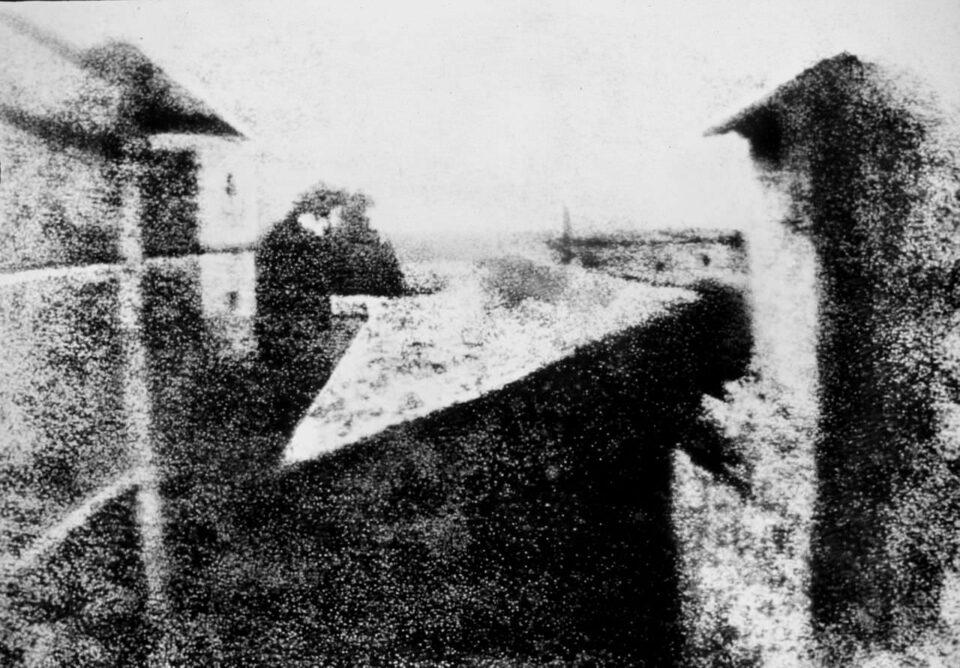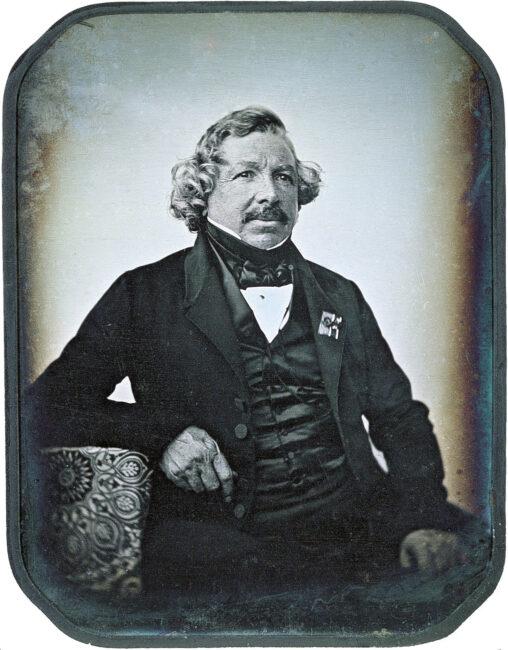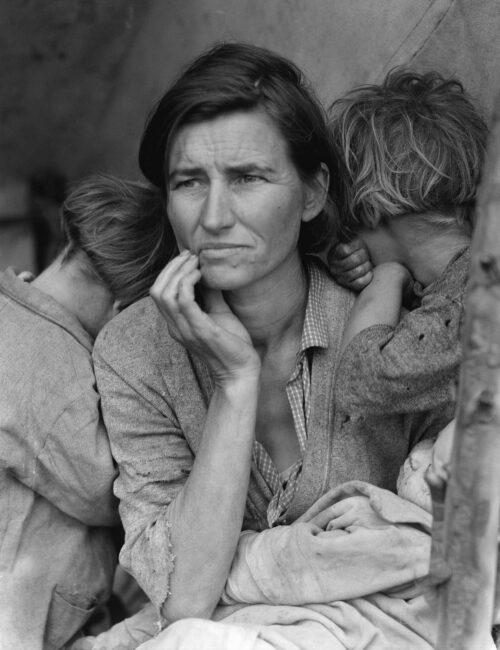Introduction to Photography: The Universal Language

This introduction to photography is written for beginners, with several tips and suggestions to take your skills as far as possible. However, writing an introduction to photography is like writing an introduction to words; as amazing and important as it is, photography can be almost limitlessly complex. What separates inspiring photographs from ordinary ones, and how can you improve the quality of your own work? This article lays a foundation to answer to those questions and more.
Table of Contents
Photography is the art of capturing light with a camera, usually via a digital sensor or film, to create an image. With the right camera equipment, you can even photograph wavelengths of light invisible to the human eye, including UV, infrared, and radio.
The first permanent photograph was captured in 1826 (some sources say 1827) by Joseph Nicéphore Niépce in France. It shows the roof of a building lit by the sun. You can see it reproduced below:

We’ve come a long way since then.

The purpose of this article is to introduce the past and present worlds of photography. You will also find some important tips to help you take better photos along the way.
Color photography started to become popular and accessible with the release of Eastman Kodak’s “Kodachrome” film in the 1930s. Before that, almost all photos were monochromatic – although a handful of photographers, toeing the line between chemists and alchemists, had been using specialized techniques to capture color images for decades before. You’ll find some fascinating galleries of photos from the 1800s or early 1900s captured in full color, worth exploring if you have not seen them already.
These scientist-magicians, the first color photographers, are hardly alone in pushing the boundaries of one of the world’s newest art forms. The history of photography has always been a history of people – artists and inventors who steered the field into the modern era.
So, below, you’ll find a brief introduction to some of photography’s most important names. Their discoveries, creations, ideas, and photographs shape our own pictures to this day, subtly or not. Although this is just a brief bird’s-eye view, these nonetheless are people you should know before you step into the technical side of photography:
Invention
Where
Impact
Quote
Invention
Where
Impact
Quote

Genre
Where
Impact
Genre
Where
Impact
Quote

Genre
Where
When
Impact
Quote
Apple became the world’s first trillion dollar company in 2018 largely because of the iPhone – and what it replaced.
Alarm clocks. Flashlights. Calculators. MP3 players. Landline phones. GPSs. Audio recorders.
Cameras.
Many people today believe that their phone is good enough for most photography, and they have no need to buy a separate camera. And you know what? They’re not wrong. For most people out there, a dedicated camera is overkill.
Phones are better than dedicated cameras for most people’s needs. They’re quicker and easier to use, not to mention their seamless integration with social media. It only makes sense to get a dedicated camera if your phone isn’t good enough for the photos you want (like photographing sports or low-light environments) or if you’re specifically interested in photography as a hobby.
That advice may sound crazy coming from a photographer, but it’s true. If you have any camera at all, especially a cell phone camera, you have what you need for photography. And if you have a more advanced camera, like a DSLR or mirrorless camera, what more is there to say? Your tools are up to the challenge. All that’s left is to learn how to use them.-
Camera. If you buy a dedicated camera (rather than a phone), pick one with interchangeable lenses so that you can try out different types of photography more easily. Read reviews, but don’t obsess over them, because everything available today is pretty much equally good as its competition. Find a nice deal and move on.
Camera
Lenses. This is where it counts. For everyday photography, start with a standard zoom lens like a 24-70mm or 18-55mm. For portrait photography, pick a prime lens (one that doesn’t zoom) at 35mm, 50mm, or 85mm. For sports, go with a telephoto lens. For macro photography, get a dedicated macro lens. And so on. Lenses matter more than any other piece of equipment because they determine what photos you can take in the first place.
Lenses
Post-processing software. One way or another, you need to edit your photos. It’s ok to start with software already on your computer, or software that comes with your camera. But in the long run, a dedicated program will do a better job. Adobe sells Lightroom and Photoshop as a bundle for $10/month, or you can buy standalone software from another company if you prefer; there are tons of options. Whatever you pick, stick with it for a while, and you’ll learn it quite well.
Post-processing software
Everything else is optional, but can be very helpful:
A tripod
Bags
Memory cards
Extra batteries
Polarizing filter
Flash
Better computer monitor
Cleaning kit
Other equipment
Your camera has dozens of buttons and menu options, if not hundreds. How do you make sense of all these options? And how do you do it quickly in the field?
It’s not easy, but it’s also not as bad you might think. In fact, most of the menu options are things you’ll only set one time, then rarely or never touch again. Only a handful of settings need to be changed frequently, and that’s what the rest of this Photography Basics guide covers.
The three most important settings are called shutter speed, aperture, and ISO. All three of them control the brightness of your photo, although they do so in different ways. In other words, each brings its own “side effects” to an image. So, it’s a bit of an art to know exactly how to balance all three for a given photo.
Shutter speed:
Aperture:
ISO:
This multi-chapter guide goes into a lot more detail about taking good photos, but you may find that some of your biggest questions can be answered more quickly. Here’s a quick photography FAQ with some questions we hear all the time:
The purpose of photography can vary depending on what the photographer is trying to achieve. For example, documentary and news photographers capture images for the purpose of providing detailed account of actual events, while hobbyist photographers aim to capture life moments with their families and friends.
There are many different types of photography, such as landscape, macro, wildlife, portrait, documentary, fashion, travel and event photography. To see a more complete list of types of photography, please refer to this article.
To start taking pictures, all you need is a camera, which can be anything from a basic smartphone to an advanced DSLR or a mirrorless camera. However, photography equipment is not all that important – light, subject, emotion and composition are all critical elements of a successful photograph.
There are a number of photography genres that are very popular today. These include portrait, landscape, architecture, fashion, food, sports, wildlife, macro, street, event and documentary photography.
If you are just starting out in photography, all you need is a camera that you are comfortable with. The rest of photography equipment is going to be based on your needs. For example, if you want to do landscape photography, you will need a number of different lenses, a tripod and filters. For portrait photography, you will need to invest in a good portrait lens and potentially some lighting equipment.
The oldest photograph, “View from the Window at Le Gras”, was captured by Joseph Nicéphore Niépce in 1826 or 1827.
The first photographic portrait ever taken was a self-portrait, or a “selfie”. It was captured in 1839 by Robert Cornelius, an amateur chemist and photography enthusiast from Philadelphia.
A photography “genre” is a type of photography, such as landscape photography, portrait photography, wildlife photography, etc.
You can learn photography from many books and online resources. A lot of information related to photography can be obtained for free in the forms of articles and videos. This article is a part of photography basics series, which is provided by Photography Life for free to everyone.
A great photograph should have good light, subject, and composition – the three elements that matter the most in photography. The photographer should have a strong vision, then express it in the most effective way possible, as explained in this article.
The three basic camera settings are: aperture, shutter speed and ISO.
Every photography genre has its own appeal. Some people like some genres of photography more than others.
In photography, the technical and the creative go hand in hand.
Remember the Ansel Adams quote from earlier? “There is nothing worse than a sharp image of a fuzzy concept.” If the idea behind a photo is weak, using the right camera settings won’t make it better.
At the same time, camera settings still matter. In a way, every technical choice is really an artistic choice in disguise. These settings are worth learning. Your understanding of photography will improve tenfold when you understand how camera settings work.
So, the next few chapters of this guide will cover the most important camera settings: shutter speed, aperture, and ISO. Then, we’ll dive into the deep end of composition. This is how photos are made.
